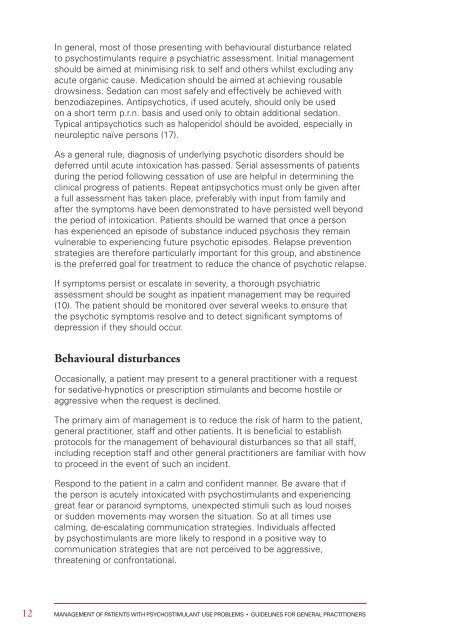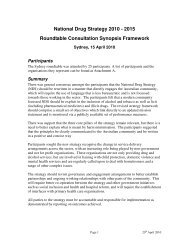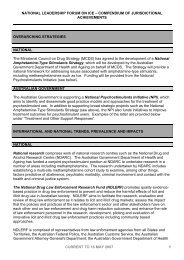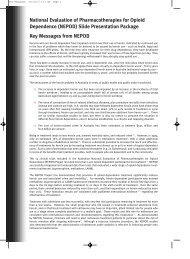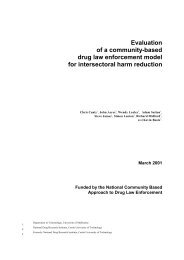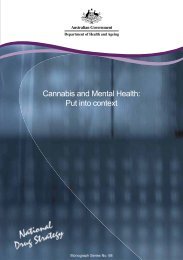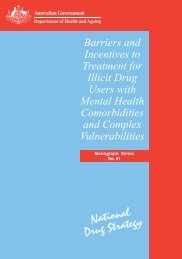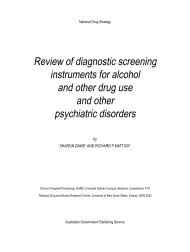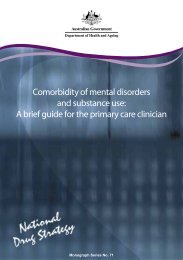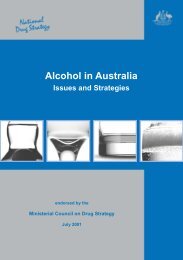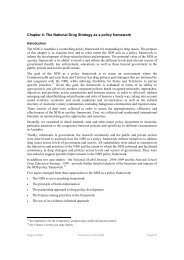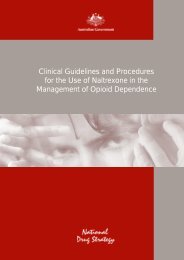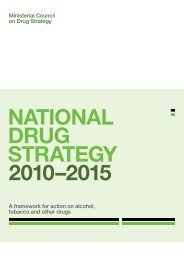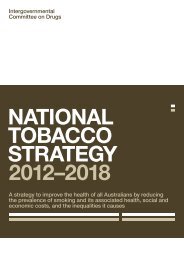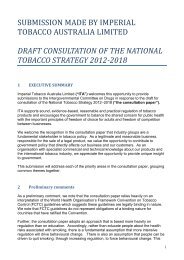Management of patients with psychostimulant use problems
Management of patients with psychostimulant use problems
Management of patients with psychostimulant use problems
Create successful ePaper yourself
Turn your PDF publications into a flip-book with our unique Google optimized e-Paper software.
In general, most <strong>of</strong> those presenting <strong>with</strong> behavioural disturbance related<br />
to <strong>psychostimulant</strong>s require a psychiatric assessment. Initial management<br />
should be aimed at minimising risk to self and others whilst excluding any<br />
acute organic ca<strong>use</strong>. Medication should be aimed at achieving rousable<br />
drowsiness. Sedation can most safely and effectively be achieved <strong>with</strong><br />
benzodiazepines. Antipsychotics, if <strong>use</strong>d acutely, should only be <strong>use</strong>d<br />
on a short term p.r.n. basis and <strong>use</strong>d only to obtain additional sedation.<br />
Typical antipsychotics such as haloperidol should be avoided, especially in<br />
neuroleptic naïve persons (17).<br />
As a general rule, diagnosis <strong>of</strong> underlying psychotic disorders should be<br />
deferred until acute intoxication has passed. Serial assessments <strong>of</strong> <strong>patients</strong><br />
during the period following cessation <strong>of</strong> <strong>use</strong> are helpful in determining the<br />
clinical progress <strong>of</strong> <strong>patients</strong>. Repeat antipsychotics must only be given after<br />
a full assessment has taken place, preferably <strong>with</strong> input from family and<br />
after the symptoms have been demonstrated to have persisted well beyond<br />
the period <strong>of</strong> intoxication. Patients should be warned that once a person<br />
has experienced an episode <strong>of</strong> substance induced psychosis they remain<br />
vulnerable to experiencing future psychotic episodes. Relapse prevention<br />
strategies are therefore particularly important for this group, and abstinence<br />
is the preferred goal for treatment to reduce the chance <strong>of</strong> psychotic relapse.<br />
If symptoms persist or escalate in severity, a thorough psychiatric<br />
assessment should be sought as inpatient management may be required<br />
(10). The patient should be monitored over several weeks to ensure that<br />
the psychotic symptoms resolve and to detect significant symptoms <strong>of</strong><br />
depression if they should occur.<br />
Behavioural disturbances<br />
Occasionally, a patient may present to a general practitioner <strong>with</strong> a request<br />
for sedative-hypnotics or prescription stimulants and become hostile or<br />
aggressive when the request is declined.<br />
The primary aim <strong>of</strong> management is to reduce the risk <strong>of</strong> harm to the patient,<br />
general practitioner, staff and other <strong>patients</strong>. It is beneficial to establish<br />
protocols for the management <strong>of</strong> behavioural disturbances so that all staff,<br />
including reception staff and other general practitioners are familiar <strong>with</strong> how<br />
to proceed in the event <strong>of</strong> such an incident.<br />
Respond to the patient in a calm and confident manner. Be aware that if<br />
the person is acutely intoxicated <strong>with</strong> <strong>psychostimulant</strong>s and experiencing<br />
great fear or paranoid symptoms, unexpected stimuli such as loud noises<br />
or sudden movements may worsen the situation. So at all times <strong>use</strong><br />
calming, de-escalating communication strategies. Individuals affected<br />
by <strong>psychostimulant</strong>s are more likely to respond in a positive way to<br />
communication strategies that are not perceived to be aggressive,<br />
threatening or confrontational.<br />
12 MANAGEMENT OF PATIENTS WITH PSYCHOSTIMULANT USE PROBLEMS • GUIDELINES FOR GENERAL PRACTITIONERS


